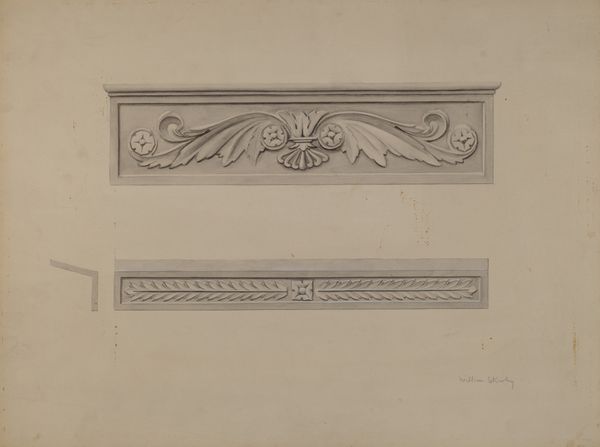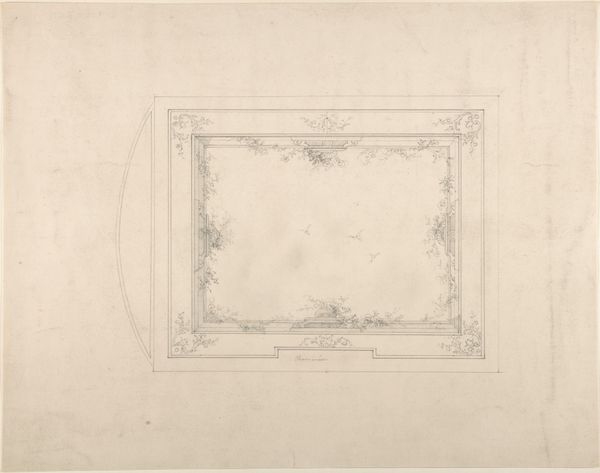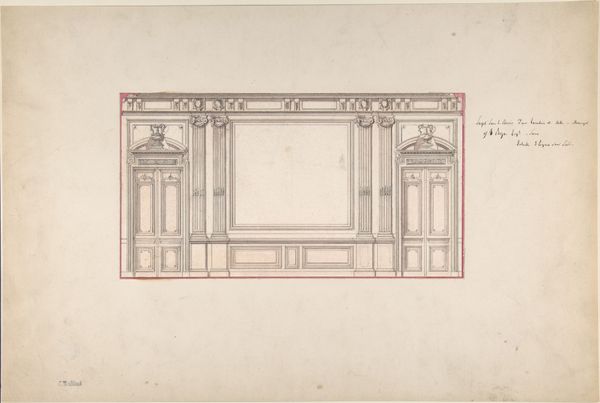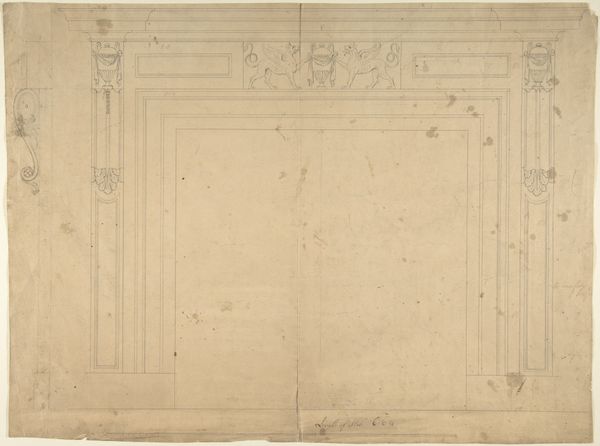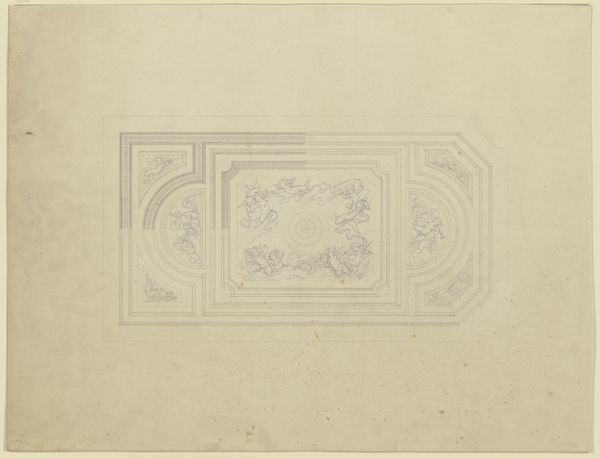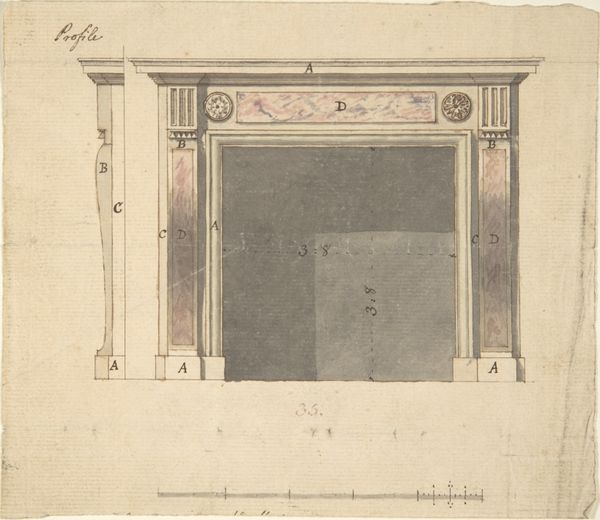
drawing, paper
#
faded colour hue
#
drawing
#
aged paper
#
art-nouveau
#
homemade paper
#
pale palette
#
pastel soft colours
#
muted colour palette
#
light coloured
#
white palette
#
paper
#
folded paper
#
decorative-art
#
soft colour palette
Dimensions: height 222 mm, width 245 mm
Copyright: Rijks Museum: Open Domain
Editor: Here we have "Detail van een spiegel naar ontwerp van Mathieu Lauweriks," a drawing from around 1910. It's a design for a mirror, rendered in soft, almost ghostly tones. The geometric patterns are interesting, but there is a kind of sadness or lost beauty about it. What do you make of this drawing? Curator: A design is never just a design. Look closely at the symmetry, the repetitive motifs. These aren’t simply decorative; they echo a deeper yearning for order and harmony. Do you see how the face is set within the circle at the centre? What does the circle signify to you? Editor: Wholeness, maybe? It reminds me of solar symbols, ancient sun deities... Curator: Precisely! The circle, the sun, the very act of mirroring - these are primal images, reflecting humanity’s attempts to understand itself. This drawing touches on much more than mere domestic adornment; it reaches for universal archetypes, hinting at cultural memory. Even the muted colors – think of faded tapestries, antique photographs - amplify that sense of something old, a lost ideal perhaps? Editor: So it’s not just a mirror design, but a symbolic representation of self-reflection, almost a gateway? Curator: Think of the mirror not only as a reflecting surface, but as an object invested with cultural significance. In art nouveau, this impulse towards infusing everyday items with symbolic weight was powerful. Does this shift how you see it? Editor: Absolutely. I hadn't considered the mirror as a symbol in itself, loaded with all those layers of meaning. Thank you. Curator: It's in these layers that we truly engage with art.
Comments
No comments
Be the first to comment and join the conversation on the ultimate creative platform.

